Antennas and Wave propagationDevices called antennas are made to transmit and receive radio waves. They are employed in many different systems, including radar and navigation systems as well as wireless communication. Antennas are essential components of any wireless communication system, and their design and performance are crucial for the overall performance of the system. Antennas work by converting electrical signals into electromagnetic waves, and vice versa. When an electrical signal is applied to an antenna, it generates an electromagnetic wave that can be transmitted through the air. When the electromagnetic wave reaches the receiver, the antenna at the receiver converts the electromagnetic wave back into an electrical signal. Antennas come in a wide range of varieties, each with a set of distinctive qualities. Dipole antennas, patch antennas, yagi antennas, and helical antennas are a few of the most popular kinds of antennas. Dipole antennasDipole antennas are the simplest and most common type of antenna. They consist of two metal rods or wires that are arranged in a straight line. The electrical signal is applied to the center of the antenna, and the two rods or wires act as the transmitters and receivers of the electromagnetic wave. Dipole antennas are often used in wireless communication systems, such as Wi-Fi and cellular networks. 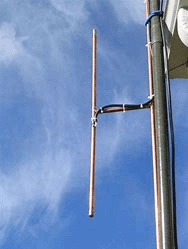
Patch antennasPatch antennas are a type of antenna that are designed for use in microwave and millimeter-wave frequencies. They consist of a flat patch of metal that is placed on a substrate, such as a printed circuit board. Patch antennas are often used in radar and navigation systems, as well as in wireless communication systems that operate at high frequencies. 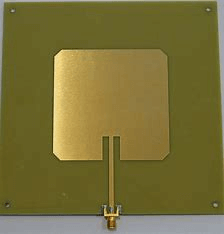
Yagi antennasYagi antennas are a type of antenna that are designed for use in directional communication systems. They consist of a driven element, such as a dipole, and one or more reflectors and directors. Yagi antennas are often used in wireless communication systems, such as television and radio broadcast systems, as well as in radar and navigation systems. 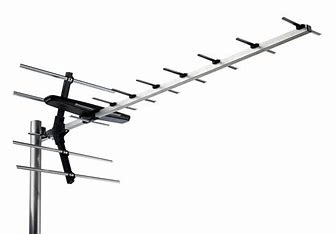
Helical antennasHelical antennas are a type of antenna that are designed for use in circularly polarized communication systems. They consist of a metal helix that is wound around a central rod or wire. Helical antennas are often used in satellite communication systems, as well as in radar and navigation systems. 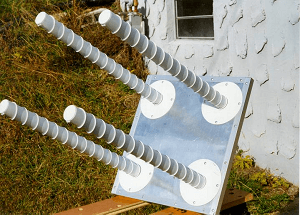
In addition to the different types of antennas, there are also different ways in which antennas can be arranged. Some of the most common types of antenna arrays include linear arrays, planar arrays, and circular arrays. Linear arrays are a type of antenna array that consists of a number of antennas that are arranged in a straight line. Linear arrays are often used in wireless communication systems, such as cellular networks, as well as in radar and navigation systems. Planar arrays are a type of antenna array that consists of a number of antennas that are arranged in a flat plane. Planar arrays are often used in wireless communication systems, such as Wi-Fi networks, as well as in radar and navigation systems. Circular arrays are a type of antenna array that consists of a number of antennas that are arranged in a circular pattern. Circular arrays are often used in radar and navigation systems, as well as in satellite communication systems. Antennas are devices that are used to transmit and receive electromagnetic waves. They are used in a wide range of applications, including: Telecommunications: Antennas are used in telecommunications systems, such as cell phones, radios, and television broadcasts, to transmit and receive signals. Wireless communications: Antennas are used in wireless communications systems, such as Wi-Fi, Bluetooth, and cellular networks, to transmit and receive signals over short and long distances. Navigation: Antennas are used in navigation systems, such as GPS and radar, to determine the location and speed of vehicles and aircraft. Broadcasting: Antennas are used in broadcasting systems, such as television and radio, to transmit signals over long distances to be received by viewers and listeners. Military: Antennas are used in military systems, such as radar and communication systems, to detect and track aircraft and ships, and to communicate with troops on the ground. Remote sensing: Antennas are used in remote sensing systems, such as weather radar and synthetic aperture radar (SAR), to gather data about the environment and weather patterns. Medical: Antennas are used in medical applications, such as magnetic resonance imaging (MRI) and wireless body area networks (WBAN), to image the body and monitor vital signs. Industrial: Antennas are used in industrial applications, such as remote control, machine-to-machine communication, and automation systems. Antennas play a vital role in modern communication and technology, allowing us to transmit and receive information over long distances, navigate and locate objects, and gather valuable data about the world around us. Wave propagationThe process by which electromagnetic waves move over space is referred to as wave propagation. Line-of-sight waves and non-line-of-sight waves are the two primary categories that these waves fall under. Line-of-sight propagation occurs when the electromagnetic waves travel in a straight line from the transmitter to the receiver, without being obstructed by any objects.Broadcasting on television and radio are examples of point-to-point communications that frequently employ this kind of propagation. 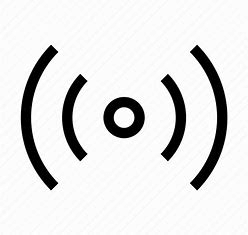
Non-line-of-sight propagation occurs when the electromagnetic waves are obstructed by objects, such as buildings or trees. This type of propagation is typically used for wireless networking and mobile communications. There are several factors that can affect the way in which electromagnetic waves propagate through space. One of the most important factors is the frequency of the waves. High-frequency waves, such as microwaves, are more likely to be affected by objects than low-frequency waves, such as radio waves. Another factor that can affect wave propagation is the atmospheric conditions. The humidity, temperature, and pressure of the atmosphere can all affect the way in which electromagnetic waves travel through space. This is why communication systems that rely on line-of-sight propagation, such as satellite communications, are typically affected by atmospheric conditions. Effects of wave propagationThe effects of wave propagation can have a significant impact on the performance of communication systems. Some of the main effects of wave propagation include: Attenuation: Attenuation is the reduction in the strength of a signal as it travels through space. This can be caused by factors such as absorption, scattering, and reflection. Attenuation can have a significant impact on the range and quality of a communication system. Multi-path fading: Multi-path fading occurs when a signal is reflected by objects, such as buildings or hills, before it reaches the receiver. This can cause the signal to arrive at the receiver at different times, resulting in a phenomenon known as multipath interference. This can cause the signal to become distorted or to fade in and out, which can have a negative impact on the quality of the communication. Diffraction: Diffraction occurs when a signal bends around an object and continues to travel through space. This can be caused by factors such as the curvature of the Earth or the presence of obstacles. Diffraction can have a significant impact on the range and quality of a communication system, particularly in situations where the signal is propagating over a long distance. Polarization: Polarization refers to the direction of the electric field of a signal. Wave propagation can also be affected by the presence of different types of interference. Interference can be caused by other communication systems, such as radio or television broadcasting, or by natural phenomena, such as lightning or solar flares. Wave propagation refers to the movement of energy through a medium, such as sound waves in air or water waves in the ocean. In certain situations, it is important to prevent or reduce the propagation of waves in order to protect structures or maintain safety. Here are a few methods that can be used to prevent wave propagation: Barriers: Physical barriers, such as walls or barriers can be used to block or deflect waves. For example, a seawall can be constructed to protect a coastal town from the waves of the ocean. Similarly, sound barriers can be used to reduce noise pollution from highways or airports. Absorption: Absorbing materials can be used to absorb the energy of waves, reducing their propagation. For example, sound-absorbing materials can be used in walls or ceilings to reduce noise pollution. Similarly, materials such as floating barriers can be used to absorb the energy of waves in the ocean. Damping: Damping materials can be used to reduce the amplitude of waves as they propagate. For example, dampers can be installed in buildings to reduce the vibrations caused by earthquakes. Similarly, floating dampers can be used to reduce the amplitude of ocean waves. Diverting: Another way to prevent wave propagation is by diverting the waves. This can be achieved by creating a channel or a canal that redirects the waves in a different direction, away from the area of concern. Water depth: Changing the water depth, such as dredging, can also be used to prevent wave propagation. Waves will lose energy as they travel into deeper water, reducing the wave amplitude and preventing damage to coastal structures. It's worth noting that all of the above methods can be combined for a better result. However, it's important to note that the effectiveness of each method will depend on the specific conditions of the area and the type of waves that are being targeted. In conclusion, antennas and wave propagation are closely related concepts in the field of telecommunications and radio communication. Antennas are tools for sending and receiving electromagnetic waves, while wave propagation refers to the way in which these waves travel through space. Understanding the properties of antennas and the way in which electromagnetic waves propagate through space is essential for designing and implementing effective communication systems.
Next TopicGroup by Column Pandas
|
 For Videos Join Our Youtube Channel: Join Now
For Videos Join Our Youtube Channel: Join Now
Feedback
- Send your Feedback to [email protected]
Help Others, Please Share










